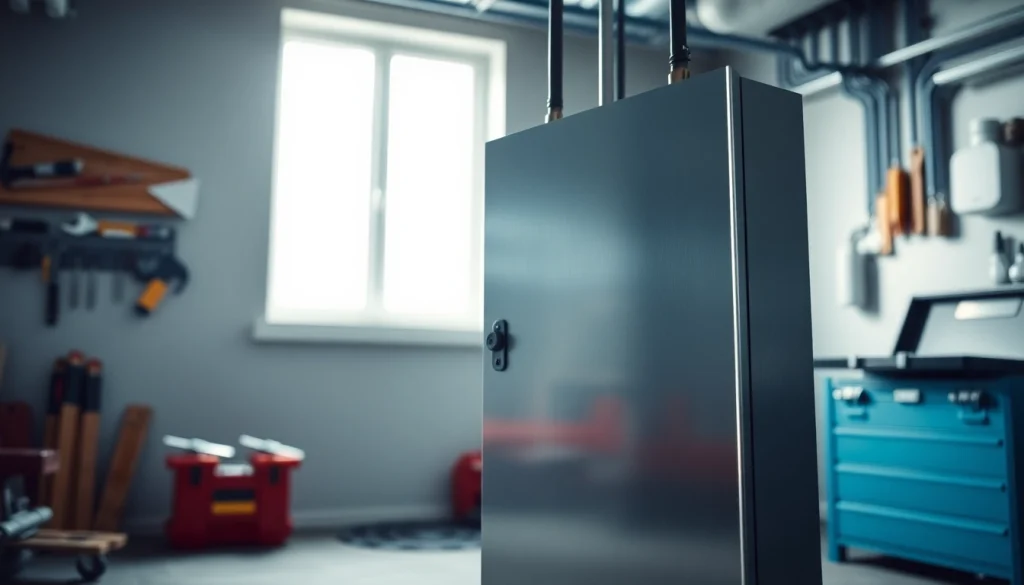Essential Guide to Electrical Panels: When to Upgrade and Key Considerations

Understanding the Function of Electrical Panels
What is an Electrical Panel?
An Electrical Panel, often referred to as a breaker box or fuse box, is a crucial component of any electrical system in residential and commercial buildings. It serves as the central hub that directs electricity from the power source to various circuits within the structure. The panel’s primary function is to distribute electrical power safely and efficiently while also providing protection against electrical overloads and faults.
Components of an Electrical Panel
Understanding how an electrical panel works requires familiarity with its key components. These include:
- Main Breaker: The main breaker controls the flow of electricity into the panel and serves as the first line of defense against overloads.
- Circuit Breakers: These smaller switches break the circuit if there is an overload or short circuit, preventing potential hazards like fires.
- Bus Bar: Copper or aluminum bars that distribute electrical power from the main line to individual circuit breakers.
- Grounding System: Essential for safety, grounding provides a pathway for excess electricity to safely dissipate.
- Panel Cover: Protects internal components and prevents accidental contact.
How Electrical Panels Distribute Power
The distribution process begins when power enters the electrical panel from the utility supply. The main breaker then regulates this incoming electricity, directing it through the bus bars to the circuit breakers. Each circuit breaker corresponds to a different electrical circuit in the home—lights, outlets, appliances, and more—ensuring that if there is a problem with one circuit, it doesn’t affect the others. This compartmentalization is vital for safety and ease of maintenance.
Signs It’s Time to Upgrade Your Electrical Panel
Indicators of an Overloaded Electrical Panel
An overloaded electrical panel can pose serious risks. There are several signs that may indicate it’s time for an upgrade:
- Frequent Tripping of Circuit Breakers: This indicates that the circuits are drawing more power than they can handle.
- Flickering or Dimming Lights: This can signal that the electrical system is struggling to meet the demand.
- Burning Smell or Overheating: Any unusual scents or heat coming from the panel is a critical warning sign and necessitates immediate attention.
- Age of the Panel: If your electrical panel is outdated (generally over 20 years), it may not meet modern electrical demands.
Age and Technology Considerations
Technology standards have significantly evolved over the last few decades. Older panels may lack the capacity necessary to support various household appliances, especially as homes now feature numerous electronic devices. Updated panels not only provide higher capacity but also incorporate modern safety features to reduce risks associated with overloaded circuits.
Safety Standards and Compliance Issues
Upgrading to an electrical panel that complies with current safety standards is essential for protecting your home. Outdated panels may not align with national electrical codes, posing severe safety risks. Compliance with modern guidelines ensures that electrical systems are equipped to handle today’s energy demands and hazards.
Choosing the Right Electrical Panel for Your Home
Types of Electrical Panels Available
Choosing the right electrical panel involves understanding the various types available:
- Breakers Panels: Commonly used in residential settings; these panels contain circuit breakers that can be reset.
- Fuse Panels: Older technology offering fuses instead of breakers; they are not as easily reset and can be more hazardous.
- Smart Panels: A newer innovation that integrates technology allowing for remote management and monitoring of energy consumption.
Capacity Considerations: Amps and Volts
The capacity of an electrical panel is determined by its amperage rating, typically ranging from 100 to 400 amps (or more for larger properties). Consider your household needs:
- 100 Amps: Suitable for smaller homes or those with minimal electrical demands.
- 200 Amps: The standard for most modern homes, accommodating a wide range of appliances, including HVAC systems.
- 400 Amps: Often used in larger homes or those with extensive electrical needs.
Brands and Models Recommended by Experts
When selecting an electrical panel, various brands stand out for their reliability and functionality:
- Square D: Known for high-quality breakers and reliable performance, with models suitable for various needs.
- Siemens: Offers a range of panels with advanced technology features and excellent warranties.
- GE: Well-regarded for affordability and features that meet modern safety standards.
Installation Process: What to Expect
Steps to Upgrade Your Electrical Panel
Updating an electrical panel typically involves several key steps:
- Assessment: Evaluate power demand and existing panel capability.
- Permitting: Obtain necessary permits from local authorities before any work begins.
- Installation: Disconnect power, remove the old panel, and install the new unit, ensuring that all connections are secure.
- Testing: Once installed, the system should be rigorously tested to ensure proper function.
DIY vs. Professional Installation
While some homeowners might consider a DIY approach to upgrading their electrical panel, this can be dangerous and often illegal without the proper permits and expertise. Hiring a licensed electrician ensures compliance with safety standards, proper installation, and minimizes the risk of hazardous mistakes.
Cost Breakdown and Budgeting for Upgrades
The cost to upgrade an electrical panel varies significantly based on several factors:
- The Panel Itself: Costs can range from $250-$800 depending on the brand and capacity.
- Labor Costs: Electricians typically charge between $50 to $150 per hour, with installation often requiring several hours.
- Permits and Inspections: Local regulations may require additional fees.
Maintenance and Troubleshooting Electrical Panels
Routine Maintenance Checks
Regular maintenance is vital to the longevity and performance of your electrical panel. Recommended checks include:
- Inspecting for corrosion or rust on wiring and terminals.
- Checking for any blown fuses or tripped breakers.
- Keeping the panel clean and free from dust to prevent overheating.
Troubleshooting Common Issues
Common issues that may arise, along with basic troubleshooting steps include:
- Tripped Breaker: Reset the breaker; if it trips again, consult an electrician as this indicates a potential overload or fault.
- Overheating Components: Ensure that the panel isn’t overloaded; if temperatures remain high, professional evaluation is necessary.
- Discoloration or Burn Marks: Immediately turn off power and consult an electrician as this could signify serious electrical trouble.
When to Call a Professional Electrician
It’s imperative to consult a professional electrician if you experience ongoing issues such as frequent circuit tripping, unusual smells, or visual signs of distress on your electrical panel. Safety should always be paramount when dealing with electricity.







